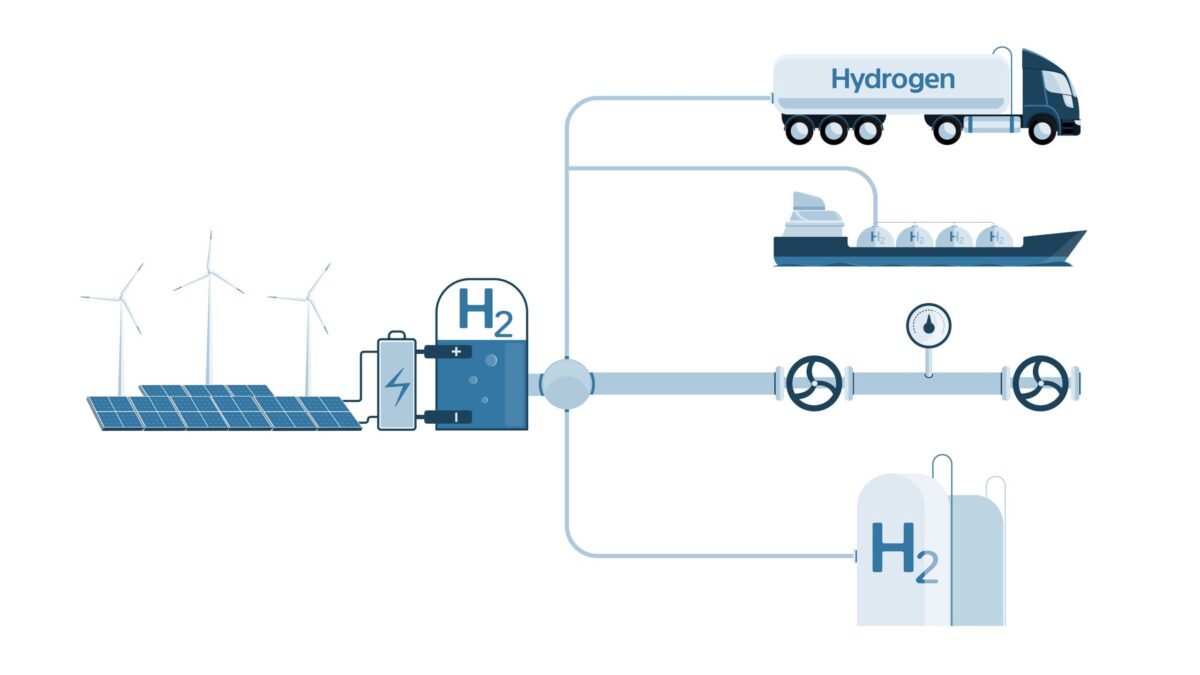
The region of Belgium, the Netherlands, and North-Western Germany forms a potential hydrogen cluster: In this region, production, distribution, and demand could be highly concentrated spatially in the future. This concentration would enable companies, authorities, and institutions to exploit network effects and make use of synergies. However, the supply of low carbon hydrogen could be insufficient to adequately meet future demand. From a present-day perspective, depending on how strong demand in industry and transport increases, a supply gap of up to 11 TWh per year could arise in 2030.
This is the main finding of the EWI study “Hydrogen cluster Belgium, the Netherlands, and North-Western Germany – A projection and analysis of demand and production until 2030” commissioned by the Gesellschaft zur Förderung des Energiewirtschaftlichen Instituts an der Universität zu Köln e. V. (Society of Benefactors of the Institute of Energy Economics at the University of Cologne).

“Whether there is indeed a supply gap in the region depends primarily on whether individual large-scale projects are realized”, says Max Schönfisch, Senior Research Consultant at EWI, who authored the study together with Tobias Sprenger, David Schlund, Jan Kopp, Arthur Gajewski and Dr. Simon Schulte. “For instance, the largest project we identified – ,NortH2′ in the Dutch province of Groningen – accounts for more than 25 percent of total production in the region, with an annual production capacity of more than 11 TWh.”
In addition, much depends on the development of demand in the region. If it remains comparably low, there could be surplus production of up to 20 TWh per year in the Netherlands, which could offset deficits in North-Western Germany (1 TWh per year) and Belgium (5 TWh per year).

The team calculated the hydrogen production volumes in the study using an EWI database of existing, under construction and planned projects. Based on the list of projects and their proposed capacities, 79 percent of low carbon hydrogen will be supplied from water electrolysis in 2030. Electrolysers will be built mainly near the Dutch and German coast in order to access more favourable renewable energy potentials. Further production will come from blue hydrogen projects (steam reforming with carbon capture and storage/utilization) in the Netherlands (12 percent) and as a byproduct of chlor-alkali electrolysis in the chemical industry (9 percent).
The EWI team also identified the location of potential demand of low carbon hydrogen through a bottom-up analysis. According to the study’s scenarios, future demand will likely be driven primarily by the steel industry and, to a lesser extent, by heavy-duty transport and public buses. Other major consumers are ammonia and methanol production as well as refineries.
“In addition to the actual implementation of proposed and planned hydrogen projects, creating a supportive political and economic framework will be decisive to support the ramp-up of a market for low-carbon hydrogen”, says Schönfisch. “Investors need planning and investment security, which can be increased by harmonizing regulation and standards.” Whether hydrogen imports can fill a supply gap depends heavily on the development of international supply chains and the infrastructure needed to support them. Imports, especially from distant regions, need long-distance pipelines or shipping infrastructure, the establishment of which takes time and requires considerable investments.